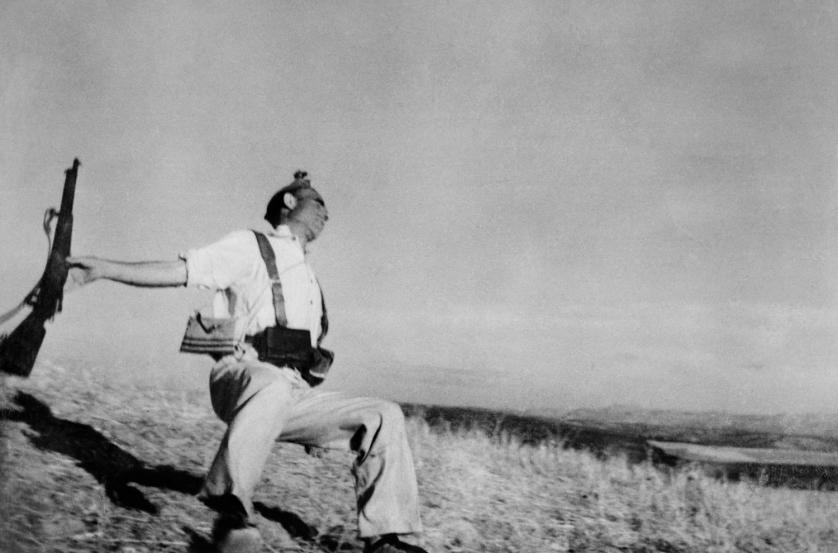In what way can the work of Lewis Bush and Clare Rae both be considered political?
At first glance, the work of Lewis Bush and Clare Rae is very different and in that sense, the two exhibitions seem more than distant from each other. Though they do share a very major similarity as both artists are influenced by, make a statement about and (whether intentionally or not) include political aspects. In this essay I’ll be exploring the recent work of Lewis Bush and Clare Rae, I aim to compare and contrast their political approaches and how evident this is in their photography, their projects and final exhibition.
‘Trading Zones’ by Lewis Bush focuses solely on the finance industry. As part of the project, the photographer took up residence on the heavily finance orientated island of Jersey; here Bush was able to experience the significance of finance and how its extensive impact affects the everyday people. The final exhibition compiles a variation of media and techniques, making it very visually and mentally stimulating to the audience. He explores finance both from the inside and out; he collected employee photographs and merged them together to create a ‘perfect employee’ or an ‘average employee’ depending on how you view it. The technique was originally developed by Francis Galton⁴, who used it for anthropology (the study of ancient and everday societies). He also collected raw data from the overall population – composing and creating a wall display of quotes, opinions and images that people associate with the word ‘finance’ in Jersey. The idea and inspiration came from an artist called EJ Major who developed this idea for her project, she handed out little templates to strangers; the words written on them were “love is…”³ and she asked bypassers to fill it in with their own words, thoughts and feelings. Lewis Bush adapted this concept slightly; he used the words “finance is…”. Bush mentioned that the inspiration and driving force behind his work was this idea of how the majority of London, Lewis Bush’s home city, is owned offshore. He mentions in an interview that the “value of U.K property [is] at over £92 billion held in Jersey”¹, that alone is an astonishing statistic but it is also what influenced Bush to start this project. The concept of ownership of land and taxation is certainly political, there are many ongoing debates and law adjustments to prevent the abuse and loopholes that larger co-operations and people with money could use to their advantages.
‘Entre Nous’, translating to ‘Between Us’, is a project by Clare Rae that exhibits and brings together her photographs and the work of Claude Cahun. The exhibition contrasts the two sets of work, showcasing the similarities and giving life to normally archived and locked away imagery. Cahun, alternately known as Lucy Renee Mathilde Schwob, is well known for their political controversies. Clare Rae also took up residency on the island of Jersey, once home to the famous Claude Chahun. Claude Cahun was a surrealist and an alter ego of sorts, Lucy Schwob adapted this name as a disguise, her motive behind this was to be taken much more seriously as a supposedly male artist and start a movement of her own. Cahun’s photography promoted the surreal movement, it explored the queer culture, gender identity, gender fluidity and allowed Schwob to take control of her own body and represent gender in photography as a whole. Clare Rae’s exhibition is a response to that movement, her photographs depict her engaging with the Jersey landscape; which was once home to Cahun who moved here in the 1930s in hopes of escaping Nazis. In the final exhibition, Cahun’s photographs are showcased on a ‘white wall’,² whereas ‘her work is on a grey wall’². Clare Rae wanted this to be presented in such a way so that it becomes possible to ‘distinguish the [two] works’². Due to copyright laws, the copies of Cahun’s work must be destroyed once the exhibition is over. Undoubtedly, this exhibition is political, it centers all around controversial topics and breakthrough movements.
In conclusion, the work of Clare Rae and Lewis Bush is absolutely political, both artist take inspiration from political subjects that have influenced their lives and surrounding. Both artist target political aspects and political controversies in their projects and produce photographs, composite images and other media that expresses political opinions and values the artists may own. Even though the artists gave existence to two, very different bodies of work, the overall motivation comes down to the reason why all photographers take and create images; to make a difference in the world- though it may be minor and almost insignificant at the start; as long as it causes a person to rethink something, causes an emotion, evokes a feeling or even stimulates the audience, the purpose of a political (or any photograph) is achieved.
Sources:
¹= quote from this interview.
²=Quote from Michelle Mountain, video about the exhibition
³= EJ Major, “love is…”
⁴= Francis Galton, Composite Portraits




